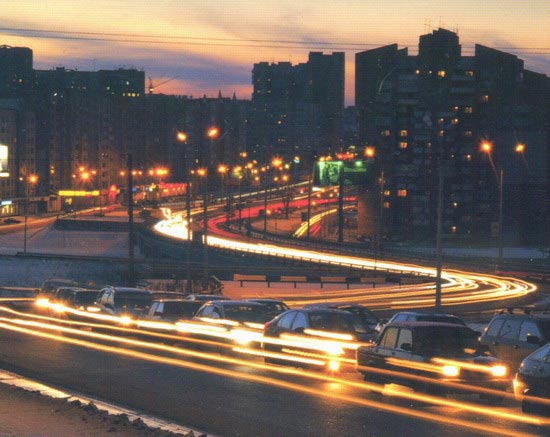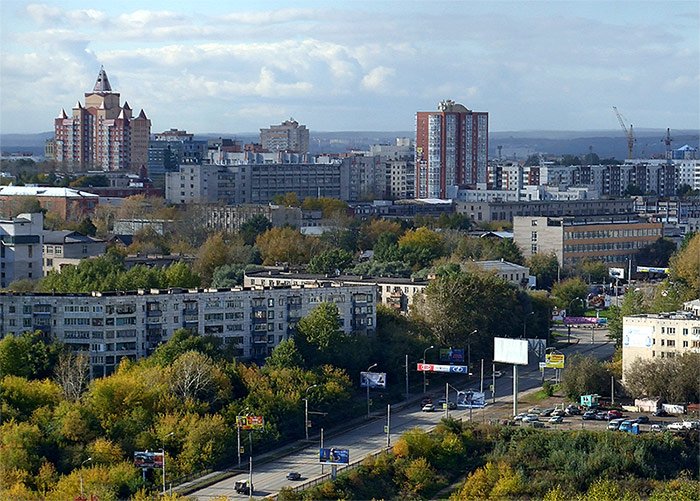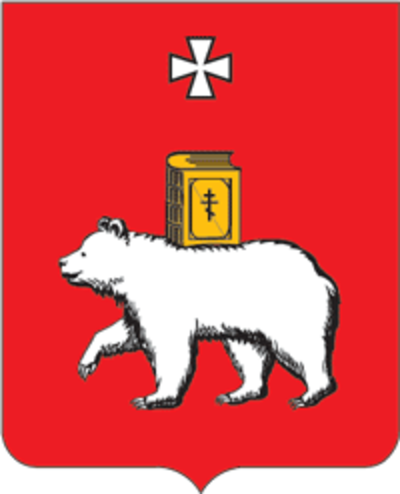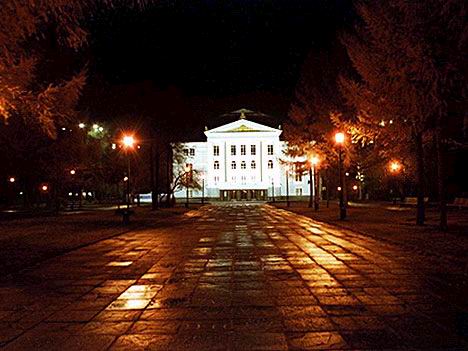Information
about Perm
Stretched out along the
Kama and Chusovaya Rivers for almost sixty kilometers, Perm
sits on the western edge of the Ural Mountains.
It is at Perm, the last big city in Europe, that
the Trans-Siberian Railroad crosses the Ural mountains and enters Siberia and Asia.
History of the
city
Since well before its
official founding in 1723, Perm has occupied a
special place in the Kama
River region. Russians
started to settle here in the sixteenth century in the time of Tsar Ivan the
Terrible, developing crafts, building churches and extracting salt. Two
centuries later, in 1723, Vasily Tatishchev was sent by Tsar Peter I (the
Great) to run copper mines and to construct a copper smelting plant on the site
of today's city.
Perm remained a small
settlement near the copper works until 1780 when Catherine the Great made it the
capital of Perm Province. The city grew rapidly after
that. Today Perm
is a large administrative, industrial, scientific and cultural center. It
occupies a territory of 798 square km and has a population of over one million.

Famous Permians
Many famous people have
lived and worked in Perm.
Others born and trained here have left, carrying its culture far and wide.
Among them are prominent merchants, businessman, industrialists and
administrators, including the Shuvalovs, the Stroganovs, Demidovs, Tatishchev,
and governors Moderakh and Kashkin. Popov, the inventor of radio, did his most important
work in Perm.
The city is also known for the work of the architects Sviyazev and Voronikhin.
The famous Russian ballet impresario Sergei Diaghilev, who produced the ballet
sensation "The Rites of Spring" in Paris
in the early years of this century, came from Perm.
Through their efforts Perm became the capital of one of the richest provinces in
Russia.
It welcomes all kinds of industrial cooperation, as well as cultural and
scientific ties and exchanges.

Perm today
Perm is the administrative
center of the Perm
region. The city has a beneficial geographical position, since it is located at
the intersection of the main Europe - Asia
railway line and the River Kama, a major waterway to five seas. The city
extends along the river for 70km. The city is accessible by air from many
cities in Russia
and from abroad.
Today Perm is a large industrial center with advanced
machine-building, chemical, oil, oil-refining and woodworking industries. The
city has a large polygraphic industrial complex, "Goznac", a
well-known keyboard instruments factory, and many enterprises in the food and
light industry sectors. Within the city, the Kamskaya hydro-electric station
has been functioning since 1956.
Perm is known as a great
scientific center, accommodating several institutes of the Ural Branch of the
Russian Academy of Science, numerous research and project institutes, 7 higher
education establishments, all developing various research traditions, of both a
theoretical and applied nature.
Arts and
culture in Perm
The cultural wealth of
the city comprises 4 state and 2 municipal theatres, many amateur theatres, a
philharmonic society, museums and other establishments. The State Art Gallery accommodates
masterpieces of Russian icon painting (the so-called "Stroganov
school"), Russian and foreign classical paintings of the 17-20 centuries,
and a unique collection of wooden sculpture. The state academic theatre of
opera and ballet, founded in 1870, has accomplished the production of all
Tchaikovsky's operas.
In 2000 the first
festival of chamber music was held in Perm, with
the support of the Perm Scientific Center
of the Ural Branch of the Russian
Academy of Science.
Further
information
The
following websites provide further information about Perm:
http://www.nevod.ru/nevod/stuff/goradm/indexOfAll.html
http://www.russia-perm.ru/index.php?option=com_frontpage&Itemid=1
http://assa13.chat.ru/Perm/art.html





